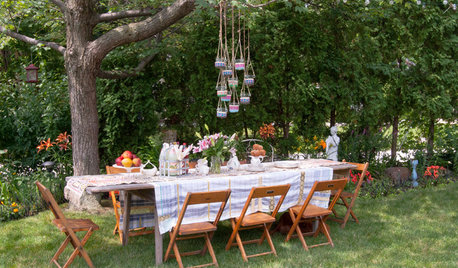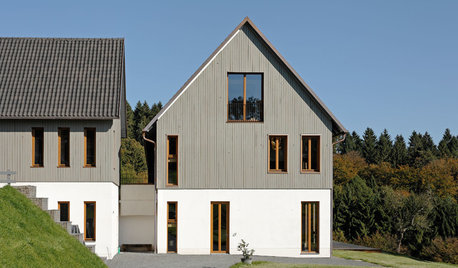Tea-Brown colored Water in Pond
southernponder
9 years ago
Related Stories

DIY PROJECTSDining Set Makeover: Paint and Tea-Tinted Fabric Make Old Chairs New
Reclaim dated dining chairs for far less than buying new, using spray paint, modern fabric and a handful of tea bags
Full Story
ENTERTAININGHow to Host a Tea Party at Home
Many people are reacquainting themselves with the gracious British ritual, steeped in tradition, that is perfect for an outdoor gathering
Full Story
COLORHow to Add Color if You’re Color Shy
Here’s how to break into the world of color without breaking a sweat
Full Story
EXTERIOR COLORExterior Color of the Week: 7 Ways With Warm Gray
See why this hue can be the perfect neutral for any house
Full Story
COLORSet the Mood: 4 Colors for a Cozy Bedroom
Look to warm hues for that snuggle-friendly feeling
Full Story
MOST POPULAR8 Great Kitchen Cabinet Color Palettes
Make your kitchen uniquely yours with painted cabinetry. Here's how (and what) to paint them
Full Story
COLORFUL HOMESCase Study: The Fearless Approach to Bold Color
Bland has no place in this San Diego home. See how the designer uses vivid hues with cohesiveness and without overwhelming
Full Story
NEUTRAL COLORS8 Great Color Palettes: Surprising Bedroom Neutrals
Peaceful plum, relaxing black and many shades of gray show an unpredictably neutral nature in the bedroom
Full Story
HOUZZ TOURSMy Houzz: Colorful Midcentury Modern by the Ocean
Retro furniture, spirited colors and a backyard teahouse create a personal coastal retreat for a family of three
Full Story
TRADITIONAL HOMESHouzz Tour: Shingle-Style Massachusetts Home With a Global Outlook
A rich mélange of African, midcentury modern and vintage treasures adds depth to a colorful new home with water views
Full Story






waterbug_guy
southernponderOriginal Author
sleeplessinftwayne
waterbug_guy
cliff_and_joann